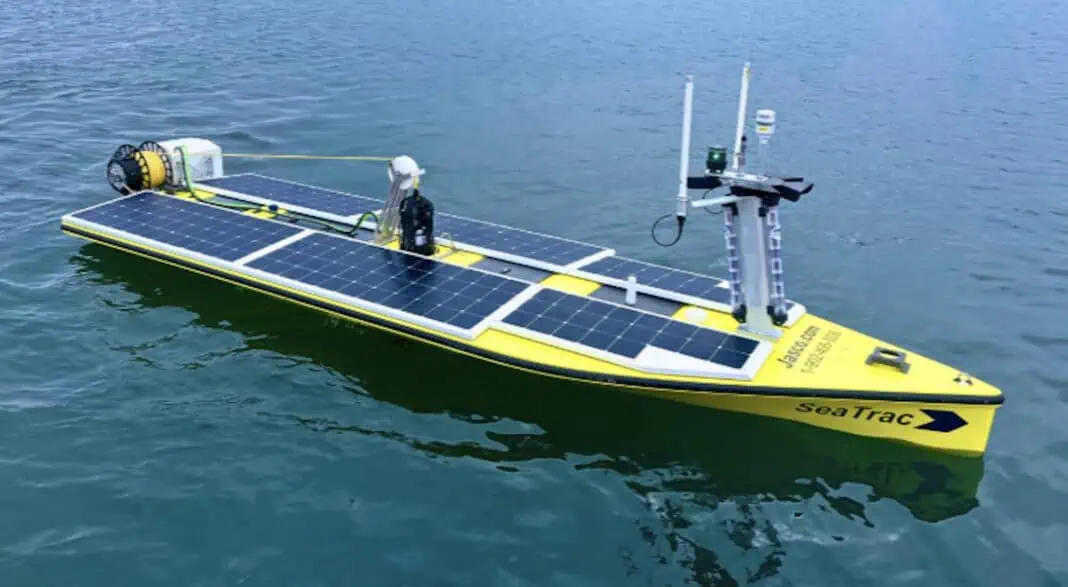A new method for monitoring marine mammals via an uncrewed surface vessel (USV) successfully tracked several North Atlantic Right Whales.
The project was supported by the Innovative Solutions Canada (ISC) “Real-Time Marine Mammal Monitoring Service via Uncrewed Surface Vehicle” program.
In a collaborative effort, JASCO Applied Sciences and SeaTrac Systems deployed an advanced Passive Acoustic Monitoring (PAM) system aboard SeaTrac’s SP-48 USV. Equipped with JASCO’s acoustic technology, a collapsible directional array and heave-compensating winch, the system successfully detected several endangered North Atlantic Right Whales during trials conducted off the coasts of Massachusetts and Rhode Island.
Traditional PAM systems rely on towed arrays, which require continuous vehicle movement and limit deployment duration. This new approach replaces the towed array with a dipping, collapsible array that supports “sprint and drift” operations, enabling the USV to collect data while stationary.
This method significantly reduces energy consumption, allowing for extended deployments and broader coverage.
Between December 14, 2024 and April 7, 2025, four field trials were conducted in various sea states and locations, including Marblehead, Massachussetts, Point Judith, Rhode Island and Cape Cod Bay, Massachussetts. These tests confirmed the system’s ability to operate reliably and autonomously in challenging conditions while consistently delivering high-quality acoustic data.
According to SeaTrac:
“SeaTrac custom-designed its solar-powered SP-48 USV with a deep keel to enhance stability and to provide precise support for JASCO’s specialized equipment. Its 48V battery powered JASCO’s heave-compensating winch which was controlled by an onboard single-board computer (SBC) to deploy and retrieve the collapsible acoustic array.”
JASCO’s array features a unique collapsible design with four adjustable arms and a fabric damper to minimize motion interference. When lowered, the array unfolds into a compact spatial configuration that captures high-quality acoustic data, which is streamed in real-time to the SBC.
At the system’s core is JASCO’s OceanObserver, an integral component of the collapsible array responsible for streaming real-time data to the SBC. Data is processed by JASCO’s StreamRepeater and PAMlab-INT software packages. Processed marine mammal detections, ambient sound reports and operational summaries are sent to JASCO’s shore-based software for continuous monitoring and reporting via Iridium Certus and Starlink satellite communication.
JASCO said:
“The real-time reporting capability of this USV-based system offers a significant advantage over traditional gliders which require surface events to transmit data. The continuous connectivity of SeaTrac’s SP-48 allows users to remotely download data, reconfigure detectors, and troubleshoot the system via a Secure Shell (SSH) 24/7.”

